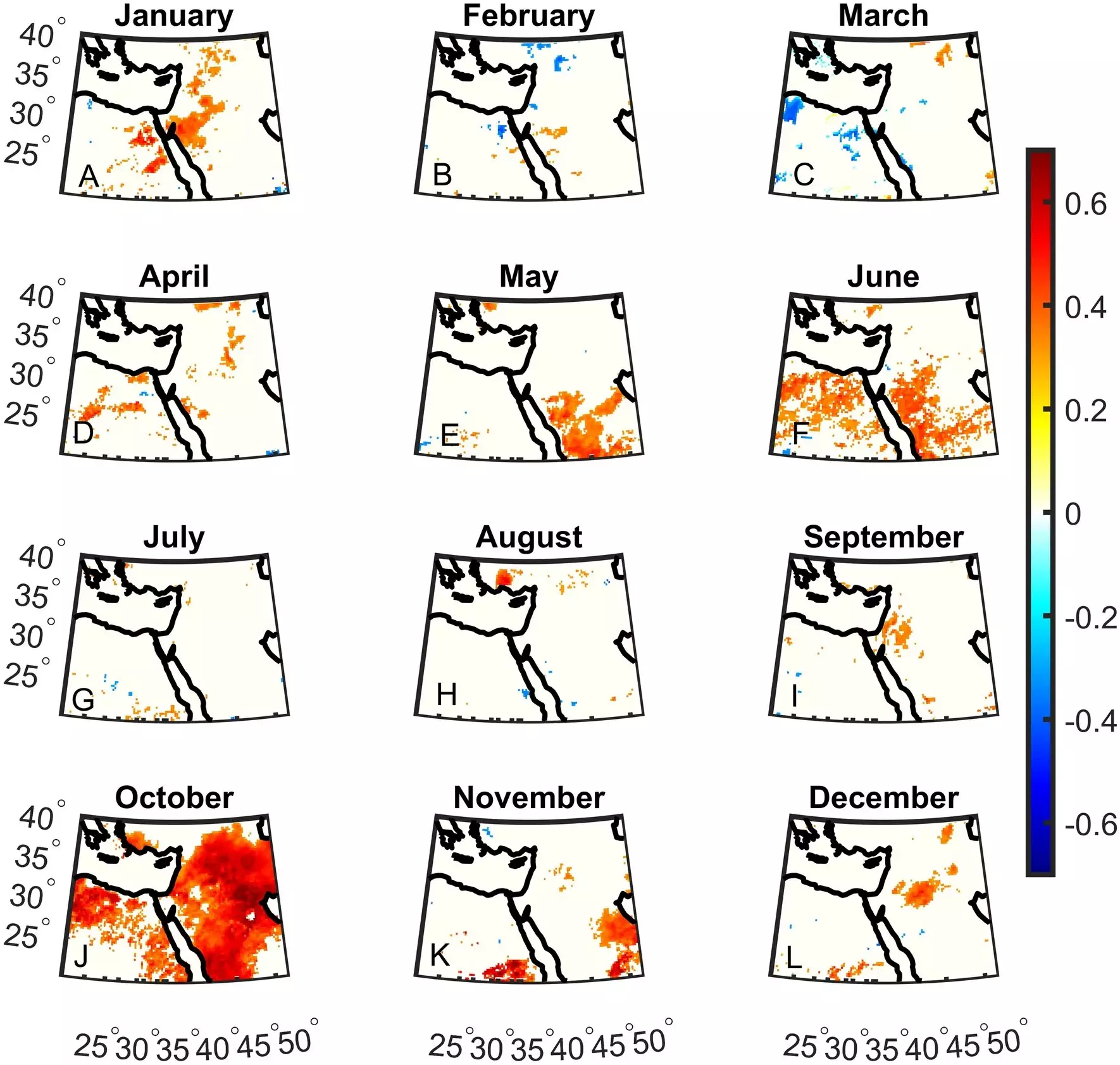A recent study conducted by Dr. Assaf Hochman and his team from the Institute of Earth Sciences at the Hebrew University of Jerusalem has shed light on the complex dynamics of sub-seasonal precipitation anomalies in the Middle East. This research has revealed significant correlations between these anomalies and key climate indices, providing valuable insights into the predictability of rainfall patterns that are crucial for both society and the environment.
One of the significant areas of impact in the Middle East is water resource management. With water scarcity concerns prevalent in the region, understanding the evolving climate patterns and their relationship with precipitation is vital for policymakers and stakeholders involved in managing water resources. The insights gained from this study can be invaluable in planning and implementing effective water conservation and distribution strategies.
Agriculture in the Middle East heavily relies on precipitation for irrigation, making it vulnerable to changes in rainfall patterns. The study’s findings on sub-seasonal precipitation anomalies and their correlation with climate indices can assist farmers and agricultural policymakers in anticipating and adapting to these changing patterns. By incorporating this knowledge into crop planning, the region can enhance the resilience of its agricultural practices and mitigate the potential impacts of extreme weather events.
The research conducted by Dr. Hochman and his team delves into the intricate relationships between climate indices and precipitation variability in the Middle East. Notably, the study identifies the Indian Ocean Dipole Mode Index and the West Tropical Indian Ocean Index as key climate indices that exhibit strong correlations with sub-seasonal precipitation anomalies. These correlations persist up to a two-month lag period, emphasizing the importance of these indices in understanding rainfall patterns.
Furthermore, the study highlights the role of these climate indices in extreme rainfall events. By attributing a significant portion of October’s precipitation variability to Indian Ocean sea surface temperature anomalies, the research elucidates how these temperature fluctuations influence precipitation patterns in the Middle East. This understanding can aid in predicting and preparing for extreme rainfall events, ultimately enhancing disaster preparedness in the region.
The study also provides evidence of an upward trend in both the Indian Ocean Dipole Mode Index and the West Tropical Indian Ocean Index over the past four decades, with an approximate increase of 0.4°C. This trend indicates the evolving climate patterns in the Indian Ocean, which intensify their impact on precipitation dynamics in the Middle East. The findings suggest that this trend is likely to continue into the twenty-first century, carrying potential regional consequences.
Dr. Assaf Hochman, the lead researcher of the study, highlights the importance of understanding the intricate interactions between the ocean and atmosphere in shaping Middle Eastern climate variability. By uncovering the connections between climate indices and sub-seasonal precipitation anomalies, this research paves the way for improved prediction and adaptation strategies. The implications of this study extend beyond academic circles, offering valuable insights for policymakers, meteorologists, and stakeholders involved in water resource management, agriculture, and disaster preparedness in the Middle East.
The research conducted by Dr. Hochman and his team sheds light on the complex dynamics of sub-seasonal precipitation anomalies in the Middle East. By analyzing the correlations with key climate indices, the study provides valuable insights into the predictability of rainfall patterns. These findings have significant implications for water resource management, agriculture, and disaster preparedness in the region. With the information provided by this research, stakeholders can better plan and implement strategies to address the challenges posed by changing climate patterns in the Middle East.


Leave a Reply